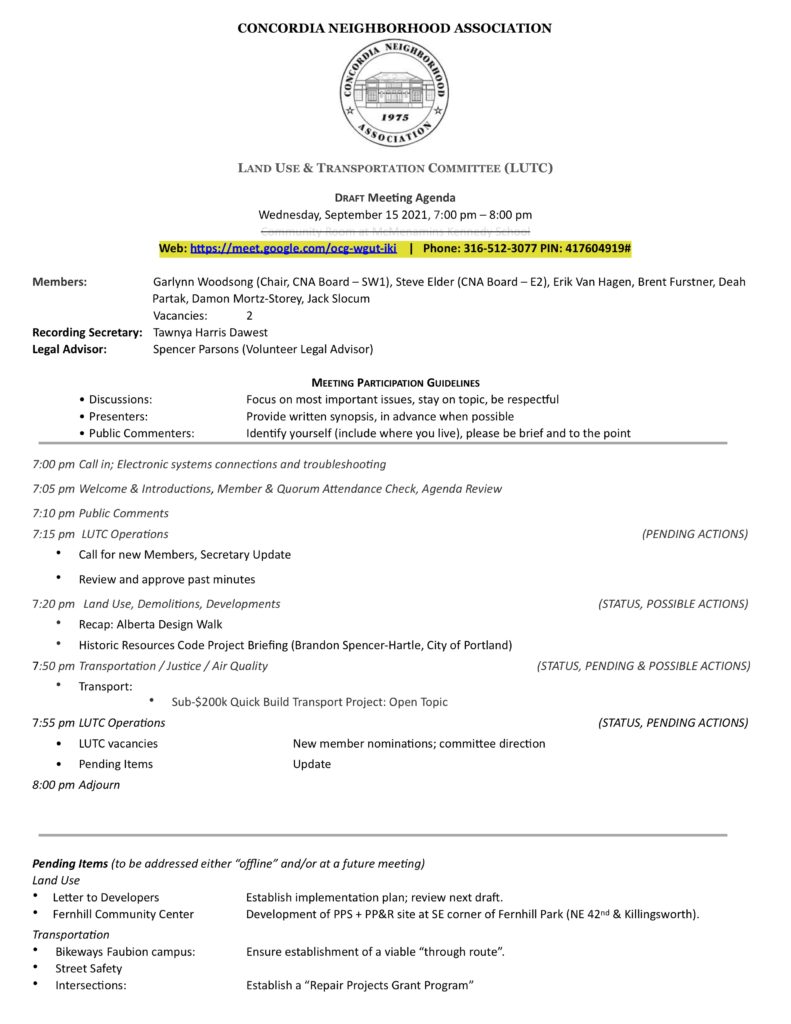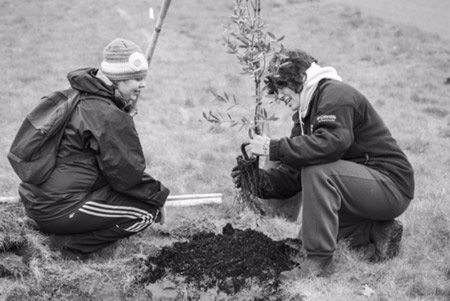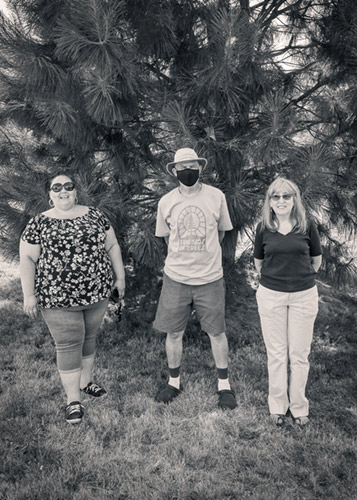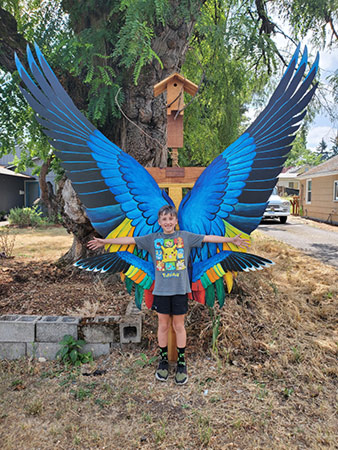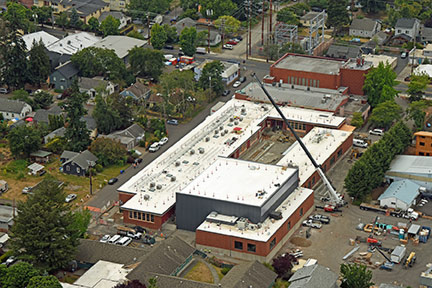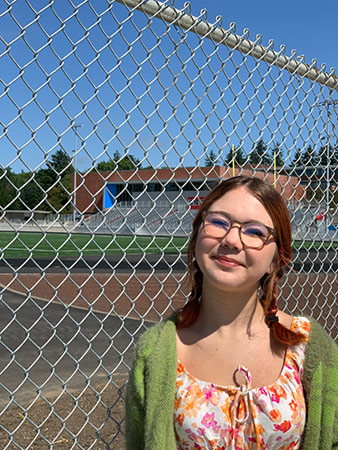Often, when homes in Concordia are demolished – to be replaced with new, larger homes – any existing mature trees on the site are also removed.
This practice can remove habitat for birds and animals, as well as remove the shading, cooling and air quality services trees provide to help mitigate the urban heat island effect.
But doesn’t Portland have an adopted city tree code that implements the Portland Urban Forest Plan and protects the beloved trees of our neighborhood?
According to research provided by neighbor Jordana Leeb, yes. And no.
Unfortunately, the current tree code exempts sites of under 5,000 square feet in size from tree preservation requirements when undergoing development.
What this means effectively is almost none of Concordia west of 33rd Avenue is subject to the Portland Tree Code:
- Parcels south of Killingsworth Street tend to have an average lot size of 4,000-5,000.
- Parcels north of Killingsworth sit on historically platted lots that are only 2,500 square feet.
- Even east of 33rd many parcels are – or can be – subdivided into lots of 5,000 square feet or less.
For sites over 5,000 square feet, onethird of all on-site trees over 12 inches in diameter are to be preserved, but applicants can choose to pay fees in lieu of preservation for any trees they wish to remove below this threshold.
The fee is only due, however, if the site isn’t eligible for an exemption from the tree code because a tree is:
- Dead, dying or could be declared dangerous by an arborist
- “Nuisance species”
- Exempted by a land use review
- Tree removals already approved through a land division or planned development
- Other reasons
Indeed, Portland’s tree code seems to be doing its part to help perpetuate Portland’s nickname: Stumptown.
Data from 2018 to 2020 citywide reports over 33 trees were chopped down that were at least a foot in diameter of the trunk at the breast height of the average person. Additional were uncounted trees with smaller diameter trunks.
The Portland Urban Forest Management Plan lacks any sort of quantitative goals to achieve in terms of tree canopy coverage, urban heat island mitigation or even tree planting.
Plans without goals are easier to achieve, which perhaps explains why this plan, policy and code do very little to actually preserve the trees of Concordia from being cut down during development.
According to the Portland Urban Forest Action Plan of 2020, 30.7% of the city is covered currently by tree canopy, up from 26% in 2002.
The plan does not state a goal for future tree canopy coverage; however, other cities have adopted goals. Nearby Milwaukie has a goal of increasing its tree canopy to 40% by 2040. Farther away, a tree canopy already covers 40% of Pittsburgh, which is still seeking to protect and expand tree coverage beyond that.
Garlynn Woodsong lives on 29th Avenue, serves on the CNA board and is an avid bicyclist. He also is a dad who is passionate about the city his son will inherit. He is the planning + development partner with Cascadia Partners LLC, a local urban planning firm. Contact him at LandUse@ConcordiaPDX.org.
